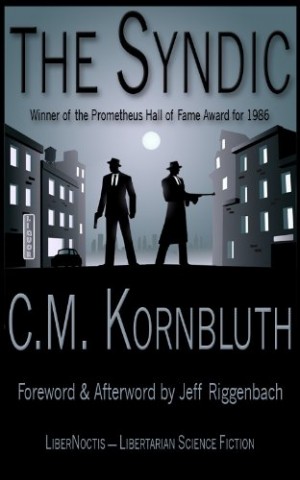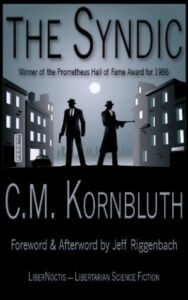
“What ifs” are the bread and butter of science fiction. What if organized crime overthrew the United States government and took over? What would life be like under the mafia? Would the people of North America be better off? These are the questions C.M. Kornbluth sought to answer in his science-fiction novel The Syndic (1953).
The Syndic is of interest to libertarians, not least because it was honored with the Prometheus Hall of Fame Award in 1986 by the Libertarian Futurist Society. This edition of the novel includes a forward and an afterward by Jeff Riggenbach that set the historical context for Kornbluth's work and life and their relevance to libertarians. The Syndic is a fast-paced, entertaining tale replete with insights into the nature of the state and of war. Indeed, it could arguably be deemed an antiwar novel; but the insights do not end there.
As The Syndic opens, the continent of North America has long been divvied up between the Syndic and the Mob. The former United States government continues to exist in exile in Iceland and Ireland as the North American Government (NAG; an apt acronym). After an odd prologue composed of historical documents that set the stage for us, we're introduced to our main viewpoint character, Charles Orsino, a low-ranking young bagman for the Syndic, who spends his days politely shaking down small businesses in the 101st New York Police Precinct for protection money and playing a brutal version of polo with jeeps and firearms instead of horses and mallets.




